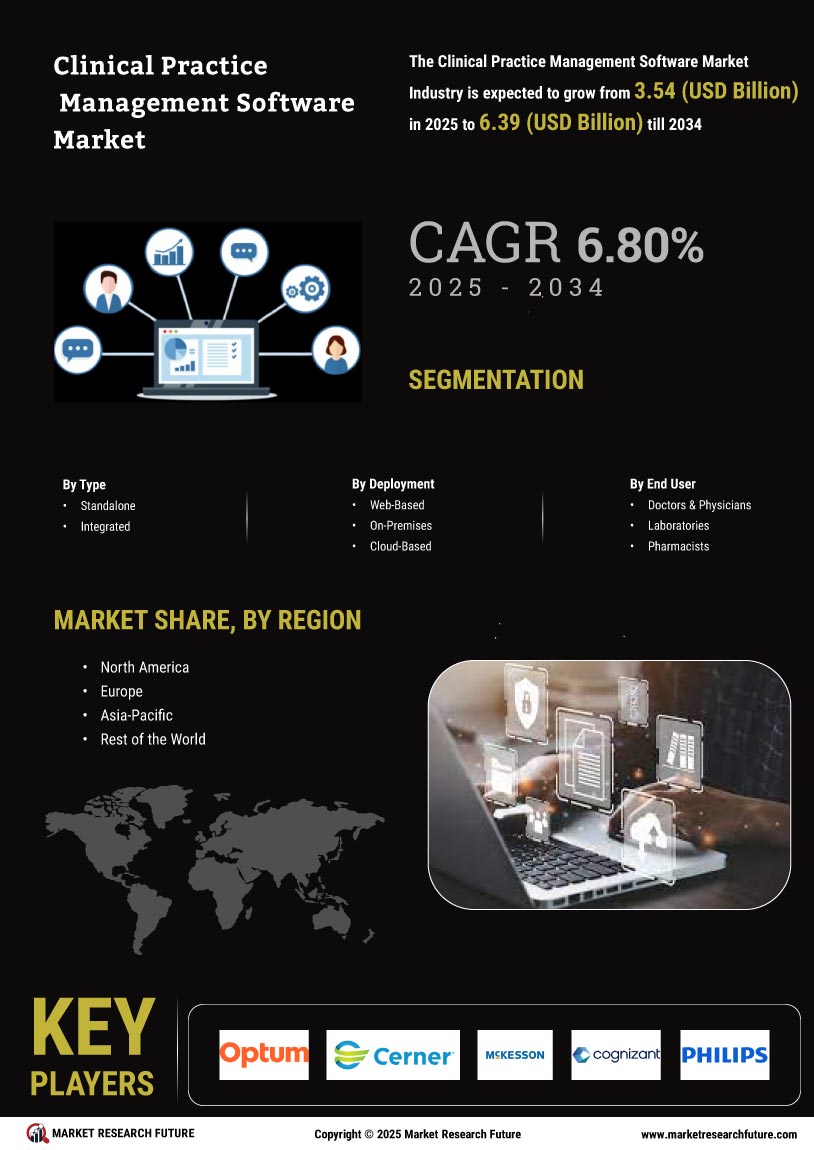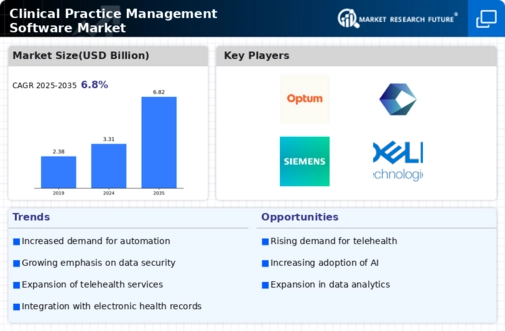Clinical Practice Management Software Market Summary
As per Market Research Future Analysis, the Clinical Practice Management Software Market was valued at 3.31 USD Billion in 2024 and is projected to grow to 6.83 USD Billion by 2035, at a CAGR of 6.80% from 2025 to 2035. Key drivers include the need to reduce healthcare costs, adequate compensation for healthcare professionals, and supportive government measures. The market is also influenced by the increasing adoption of healthcare IT and the demand for high-quality, cost-effective medical care. The Covid-19 pandemic has accelerated the shift towards digital management systems, enhancing operational efficiency in healthcare facilities.
Key Market Trends & Highlights
The Clinical Practice Management Software market is witnessing significant growth driven by various factors.
- Market Size in 2024: USD 3.31 Billion.
- Projected Market Size by 2035: USD 6.83 Billion.
- CAGR from 2025 to 2035: 6.80%.
- North America held 45.20% market share in 2022.
Market Size & Forecast
| 2024 Market Size | USD 3.31 Billion |
| 2035 Market Size | USD 6.83 Billion |
| CAGR | 6.80% |
Major Players
Optum Inc, Cerner Corporation, McKesson Corporation, Cognizant, Koninklijke Philips N.V., Xerox Corporation, Siemens Ltd., Dell, Epic Systems Corporation, GE Electronic, Allscripts.
















Leave a Comment